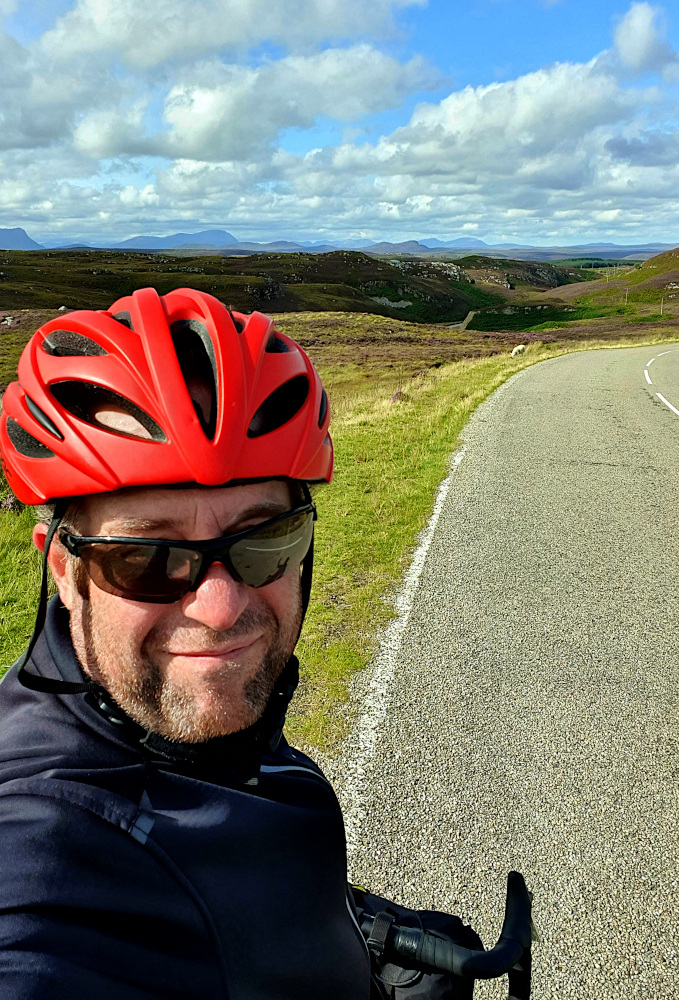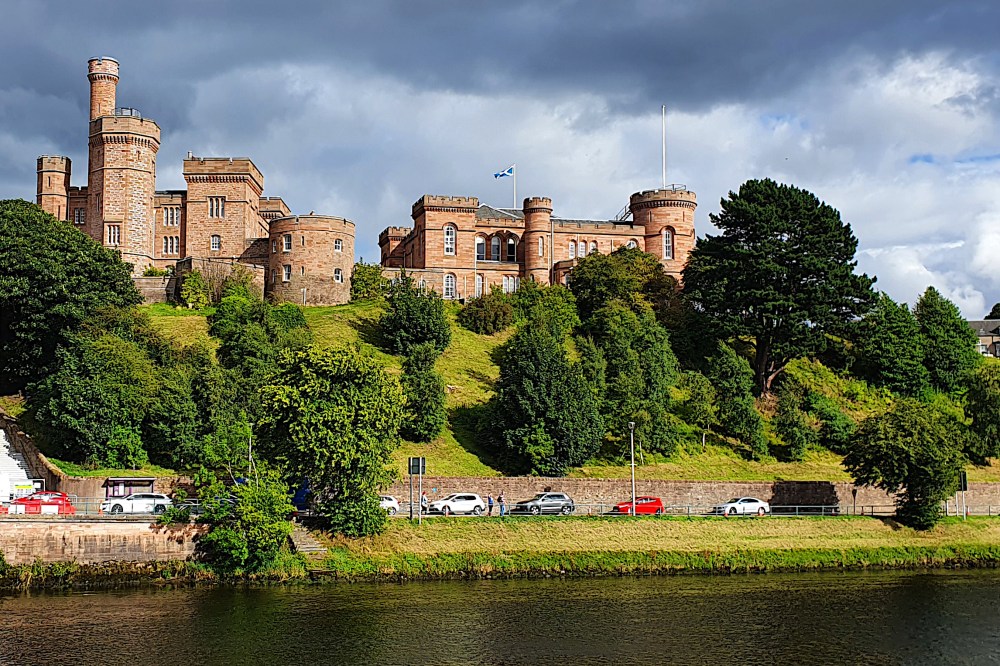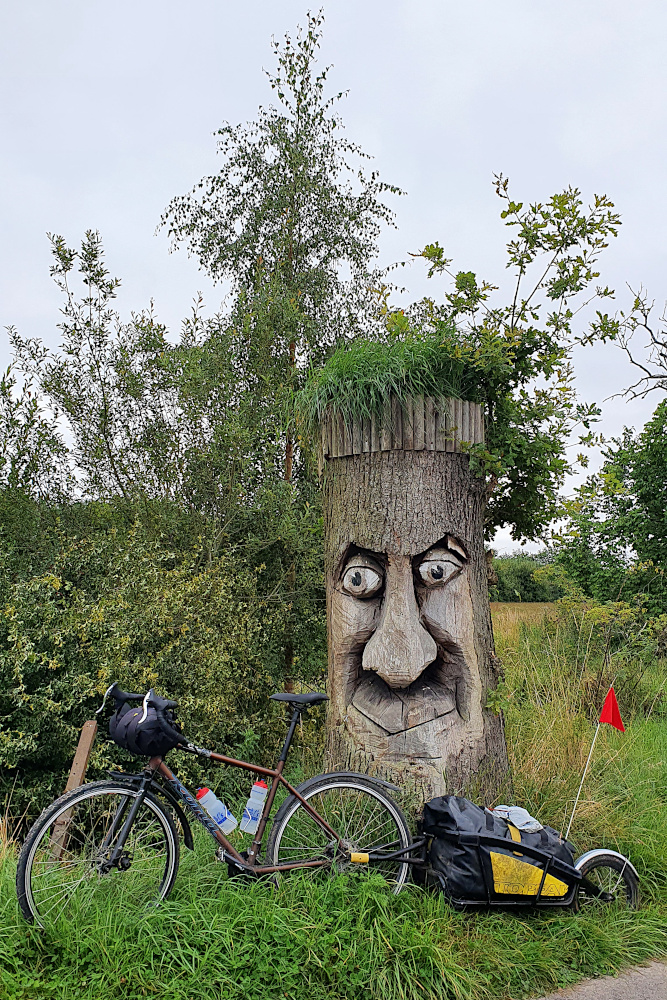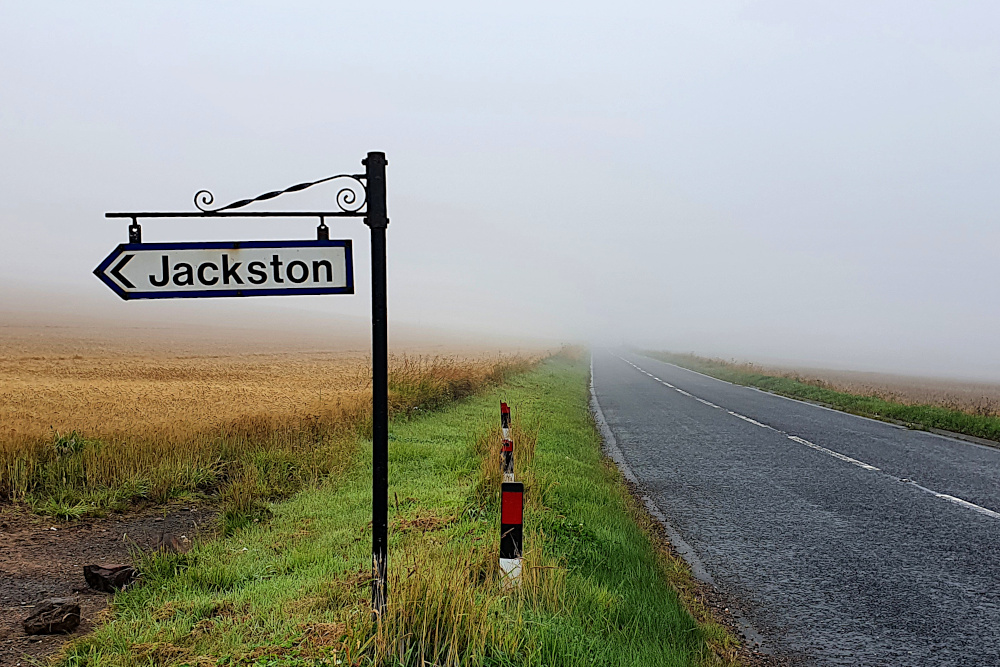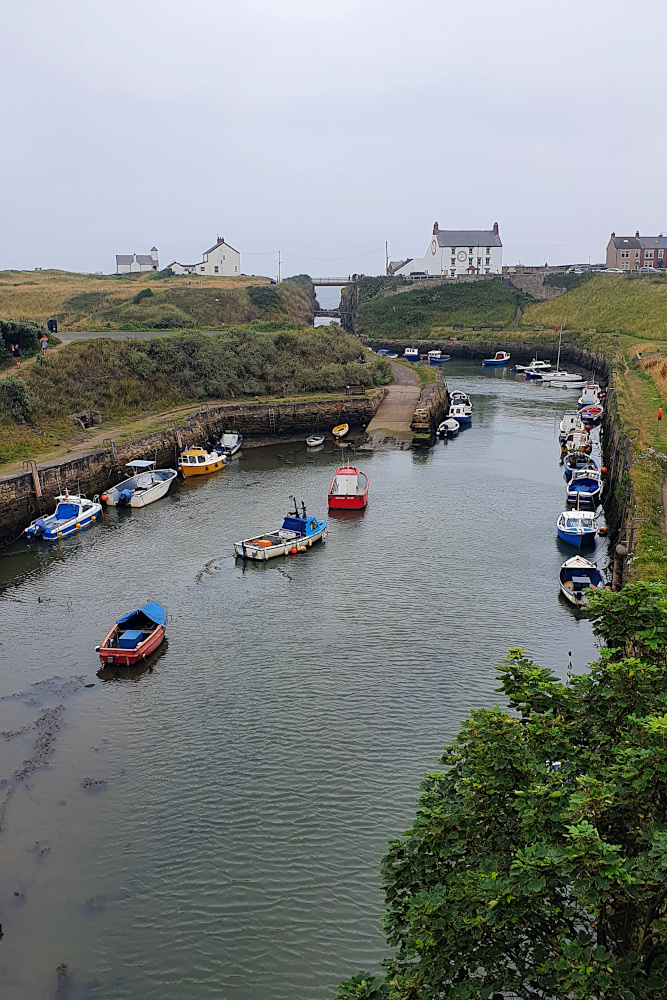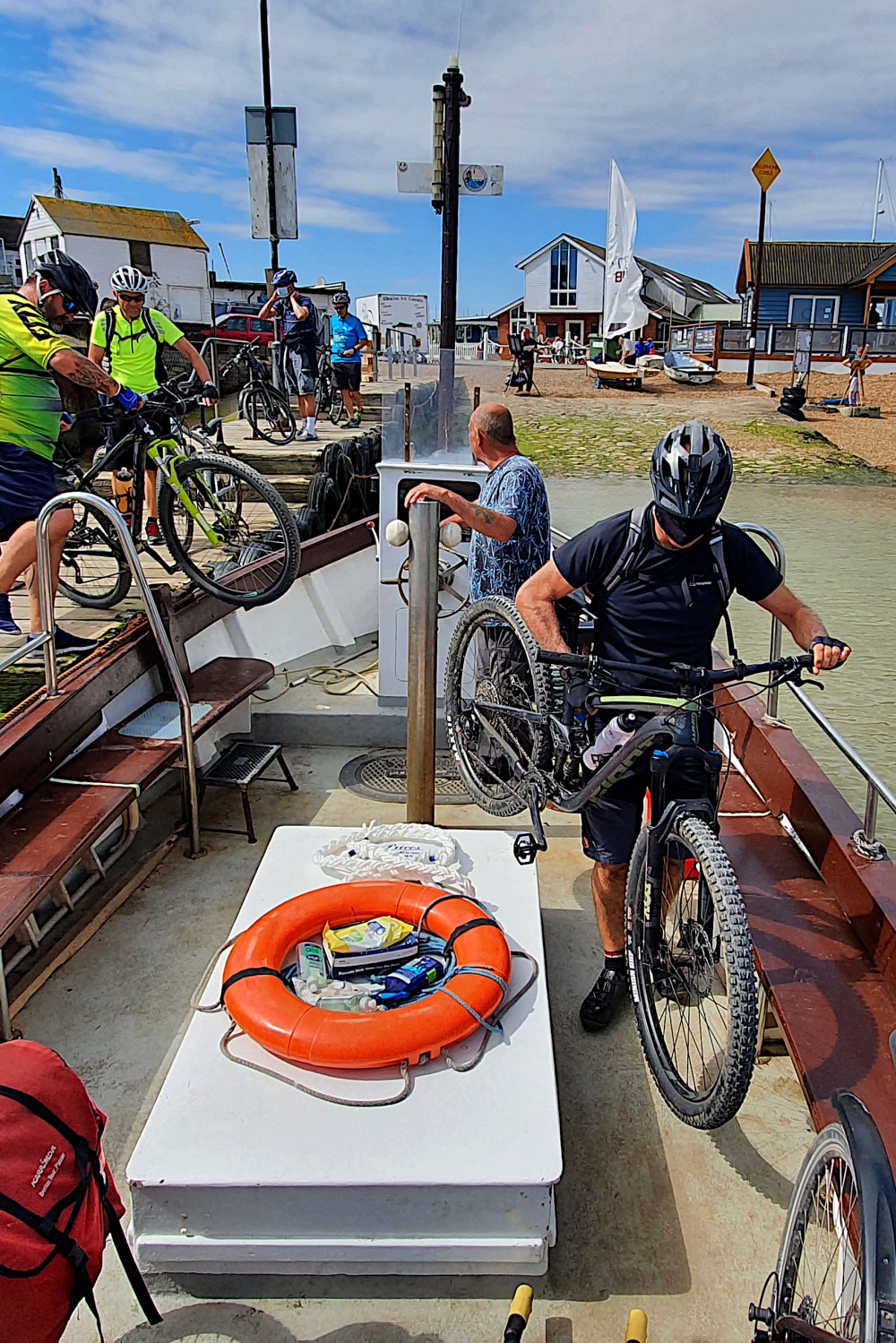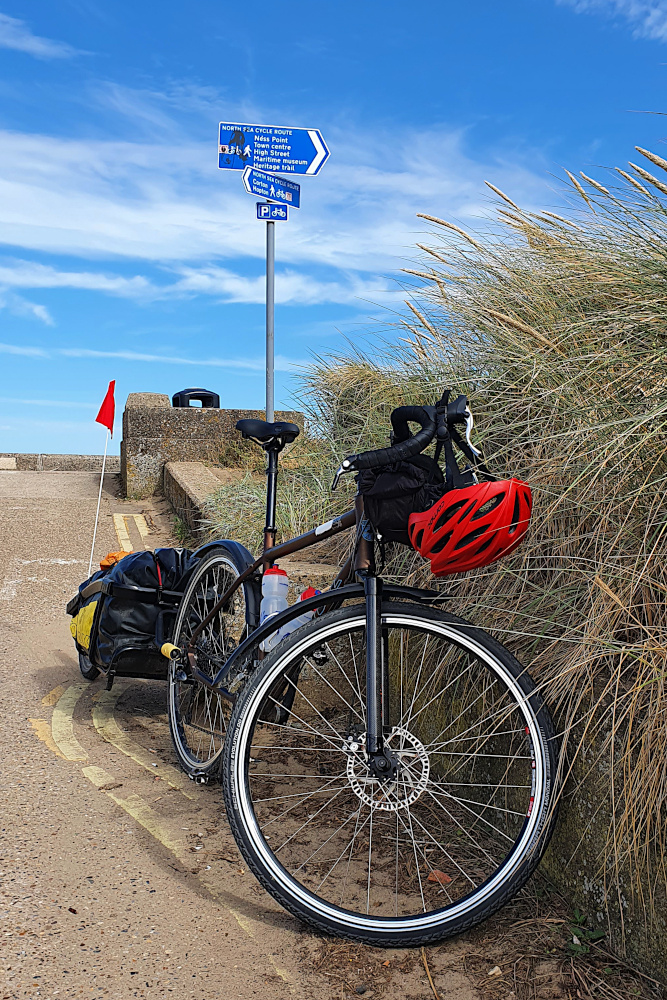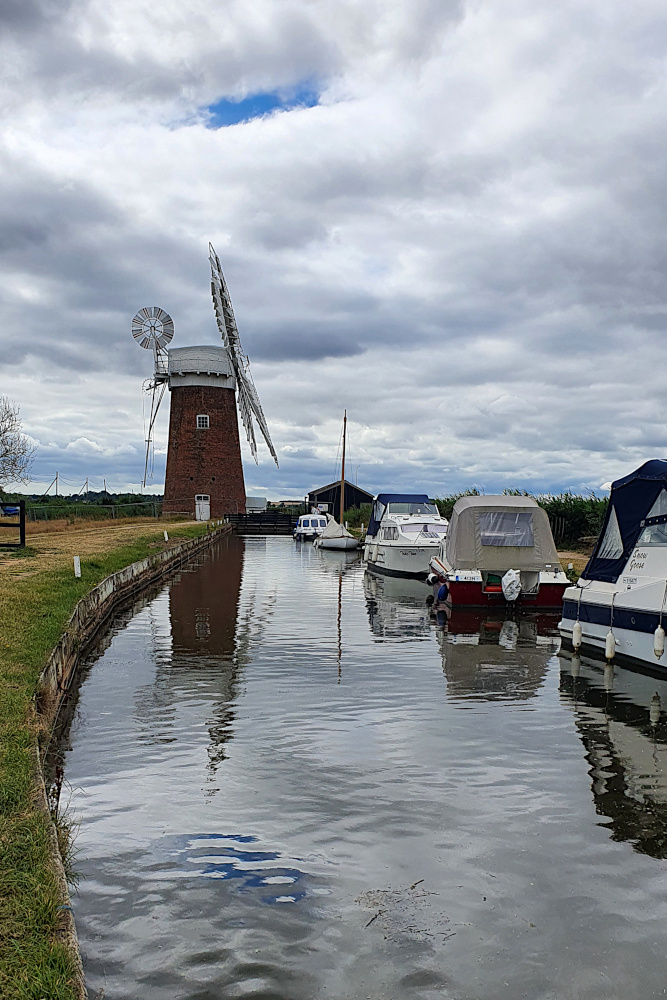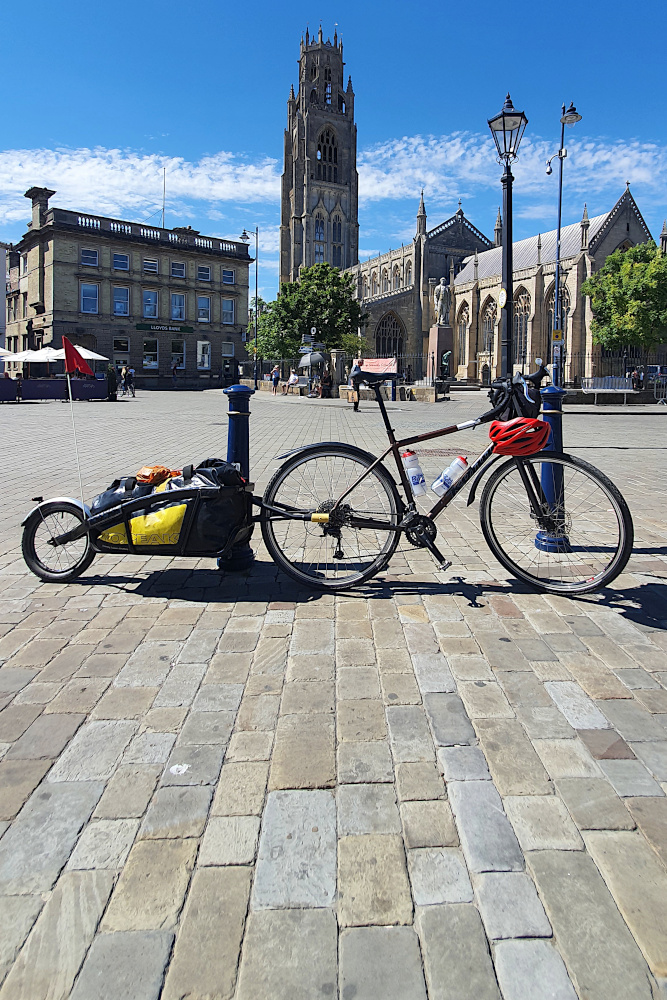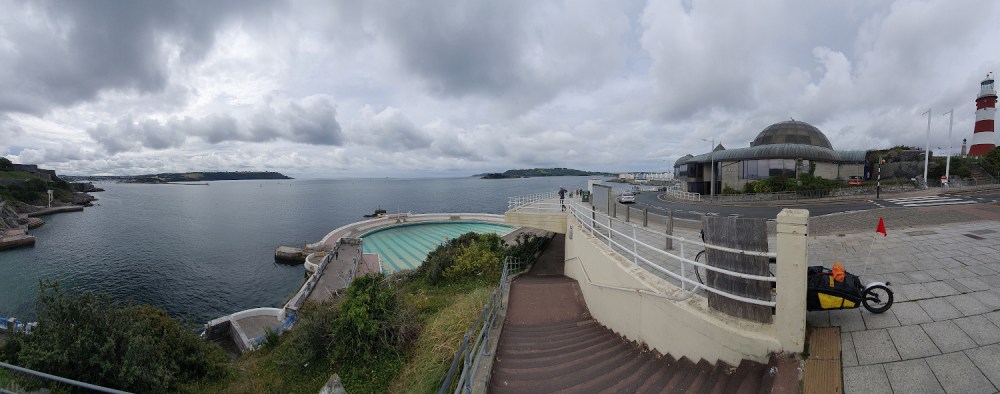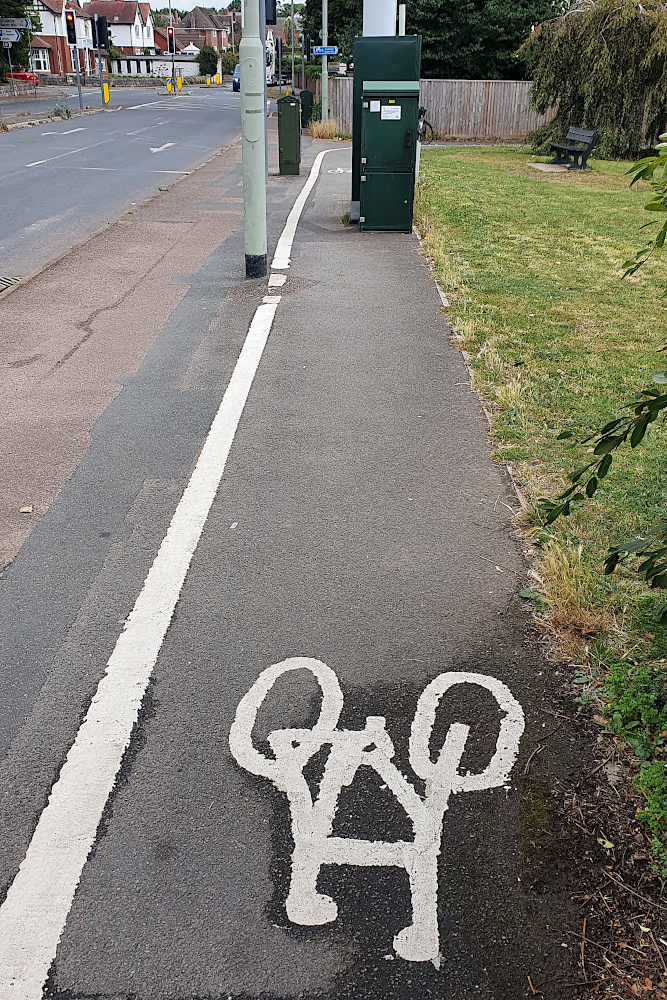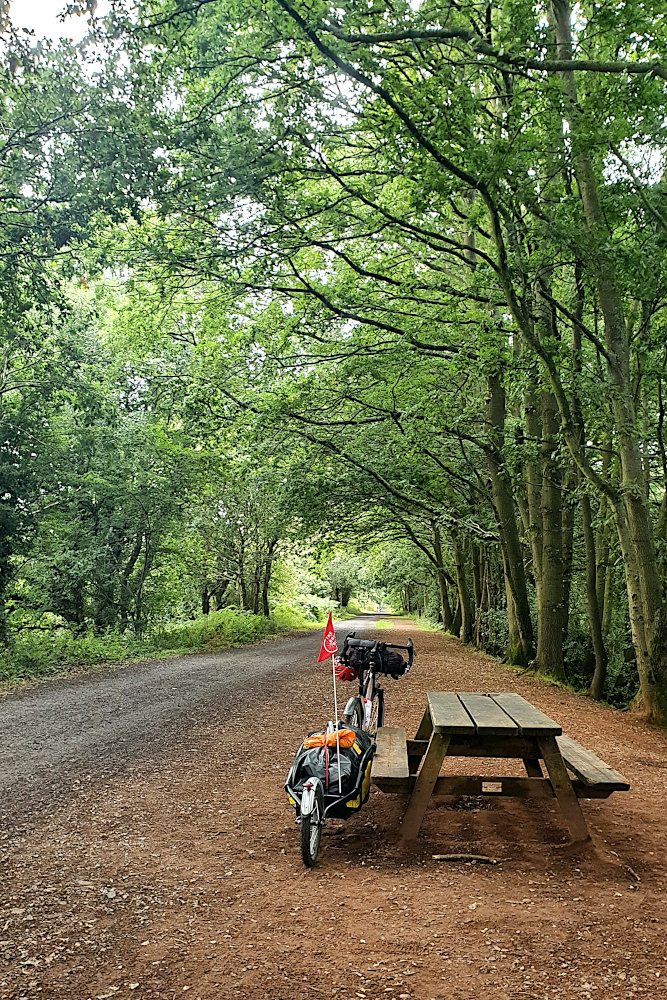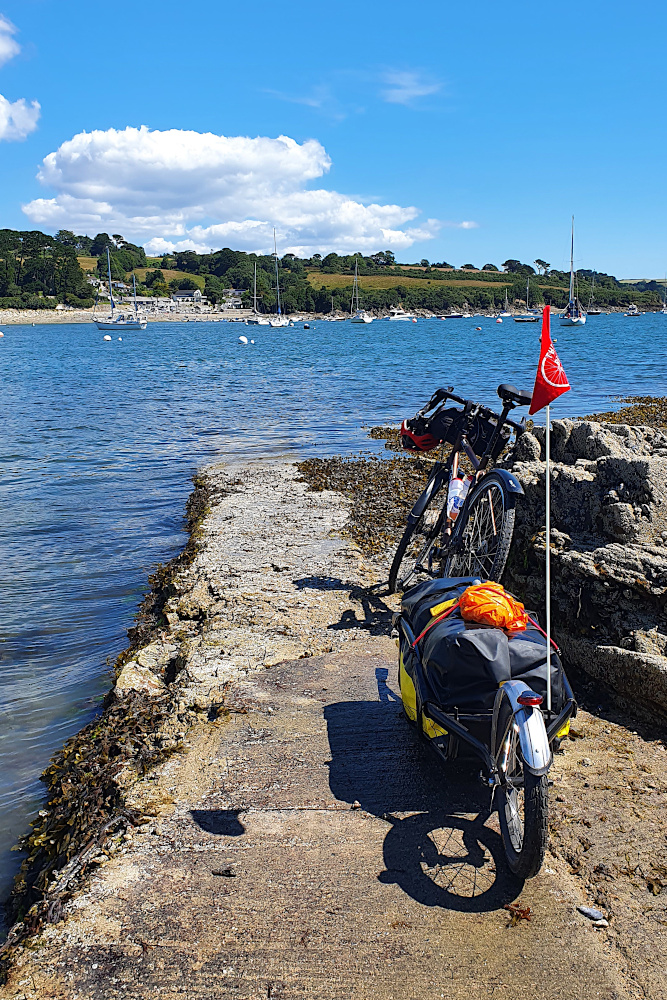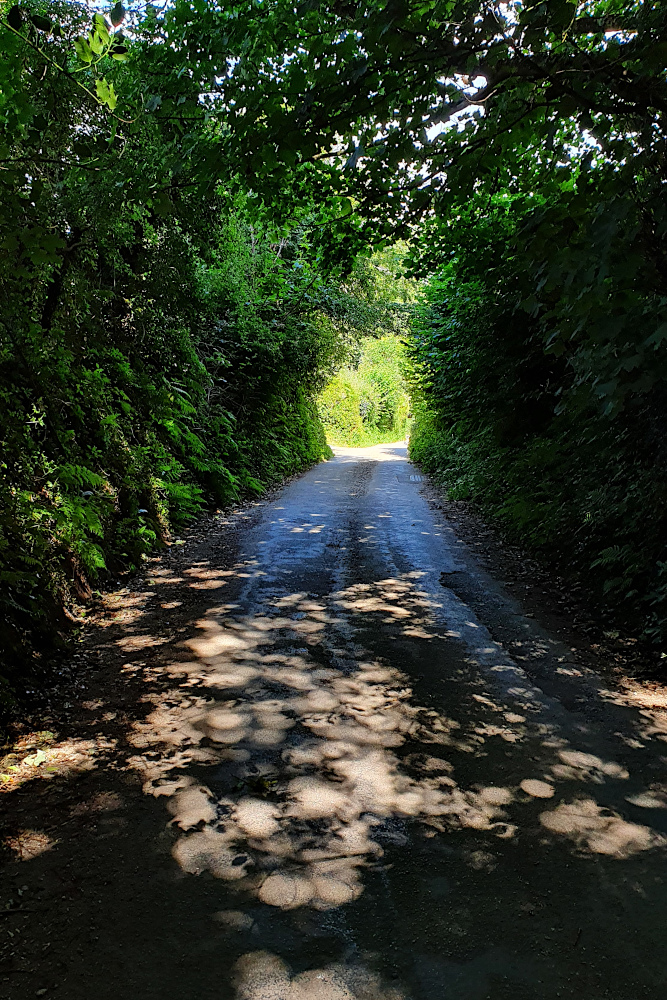The wind had flipped around as I left Boston on Saturday. It was a bit unfortunate to have a headwind to deal with for the first time since the south west. But also amazing that I’d not had a headwind to deal with since the south west.
Lincolnshire is still largely flat lands, following on seamlessly from East Anglia. And, as I followed the canalised River Witham northwards, progress got easier or harder every time it slightly changed direction, as my angle to the wind altered.

You could argue that I cheated ever so slightly by trimming the edge off Lincolnshire. Being Saturday, I thought it was probably better to avoid the hordes of potentially Covid-infested day-trippers at the big seaside resorts on the coast, so cut inland along the river instead. Or maybe this is just an excuse for avoiding the worst of the headwinds along the coast.
In any case, I was doing a quick roadside map check, when an elderly chap on a light touring bike screeched to a halt next to me (he really needs to replace his brake pads). The encounter didn’t last long, as I was treated to a high-speed monologue ranging from my trailer to his £1000 Rohloff hub, to his planned ride for the day, and where he was going to have lunch.
This was where I realised that I’d definitely entered the North of England. I’d been vaguely thinking about the edges of the country. He was worried about edges too, or at least that I wasn’t going to be getting much shelter from the wind up on the riverbank. There weren’t any ‘edges there, though there were on the ‘ills, where he was heading.
It took me a while after he’d gone to realise that he was talking about hedges. I’ve not heard very many aitches since.

Crossing the Humber Estuary on the huge suspension bridge removes (I think) any doubt as to whether you’ve left the midlands behind.
Since the Humber, it’s mainly been old railway lines (first from Hull to the coast, then the Cinder Track from Scarborough to Whitby) and hills. Mostly not the nicely surfaced, commuter-friendly sort of rail paths that I’m used to in the South, but the sort of dusty, rough, rocky paths that keep your speed frustratingly low, and would probably break a road bike in half. On the plus side, like most railway paths, they were surrounded by ‘edges, so the headwind stopped being a major problem.
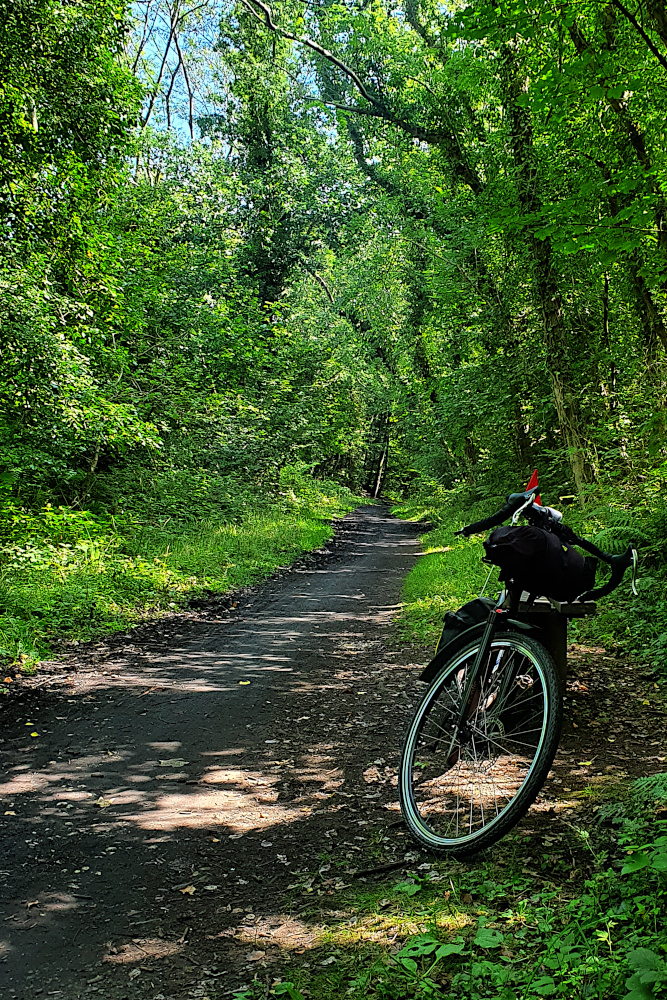
The Cinder Track, in particular, put me back right on the edge of land and sea. It’s a beautiful route, including some lovely views, like Robin Hood’s Bay (below).

Though I’d give yourself a day for it rather than the half day I pushed through it in. The drop into the bay was a rutted, bumpy test of both me and the trailer; we both passed, just, though with the front wheel sliding around in a somewhat alarming manner. And the track was hard enough going that it didn’t set me up well for the rest of the afternoon.
Which was unfortunate, as I needed to cross the North York Moors National Park. This is a beautiful place, and somewhere I’m very familiar with, as it’s where my Dad’s family came from. So I knew what was coming; stunning countryside, but with ups and downs as steep and frequent as Cornwall.

It didn’t especially help that I’d gone a bit too deep on the Cinder Track. But it also didn’t help that the National Cycle Route planners had seen fit to drop a couple of miles of very rough, very steep gravel into the mix, just when I thought I’d got through the tough parts.
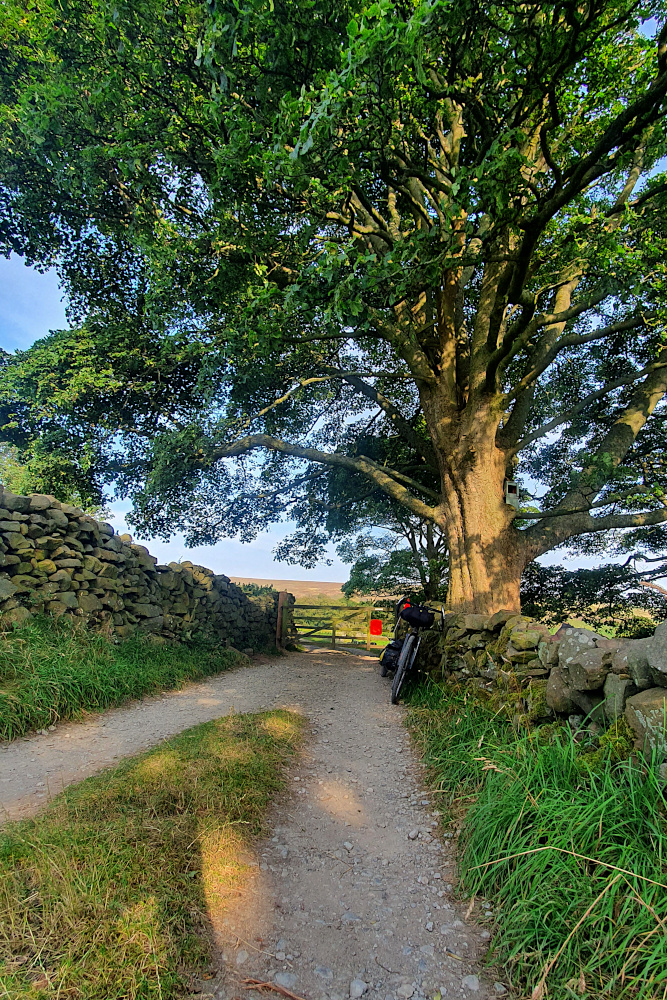
It looks a little like the ‘White Roads’ of Italy, where the pro road racers take in sections of gravel road. But once again, it’s steep, and pitted, and the gravel is a bit too big to actually ride on. It was a beautiful end to the day, but I really need to learn to take things easier sometimes. I should be old enough to know when I’m biting off more than I can chew by now.
Dropping off the Moors into the flatter lands around Middlesbrough puts you right in line for one of the UK’s biggest calorie injections; the Teesside Parmo. I was immediately biting off more than I could chew again. A Parmo is effectively a deep-fried double chicken-breast schnitzel, knee-deep in bechamel sauce and melted cheese. They’ve been clocked at over 2000 calories each, including the chips. That’s a day’s worth of energy on one plate; not normally advisable, but just the thing to fill the tank of a touring cyclist who’d slightly overdone things.

And so, rather than being completely destroyed on Tuesday morning, I was ready to press on northwards. After negotiating Middlesbrough and Stockton-on-Tees, is was another old railway line that took me into County Durham. Although not sealed, the surface was smooth, and the progress quick. I wonder why some railway path builders can make them smooth, and others can’t?
After the railway line, I was already approaching Gateshead, and then Newcastle. After wiggling through a bunch of small mining and industrial towns, a short climb led me to the symbol of the region; the Angel of the North, standing guard over the main road into Tyne valley.

And then, an unexpected delight. You never hear about this region in discussions about cycling infrastructure in the UK.
But, for the very first time on this trip, I rolled through Gateshead, and across the river into Newcastle on well-signposted, smooth cycle tracks. I just followed large, clear signs through cycle-specific traffic lights, along clearly demarcated, wide shared paths, and segregated bike tracks. No frustrating map checks, no close passes, no conflict with pedestrians. Someone has actually designed this properly.
With the posssible exception of London, I’ve never seen a UK city which is easier to navigate by bike than Newcastle / Gateshead. It should be embarrassing for so many other cities and towns that I’ve been through, which still seem not to get it, but it’s great to know that at least one city region is doing bike infrastructure properly. I wonder why some councils can do it properly and most can’t?
